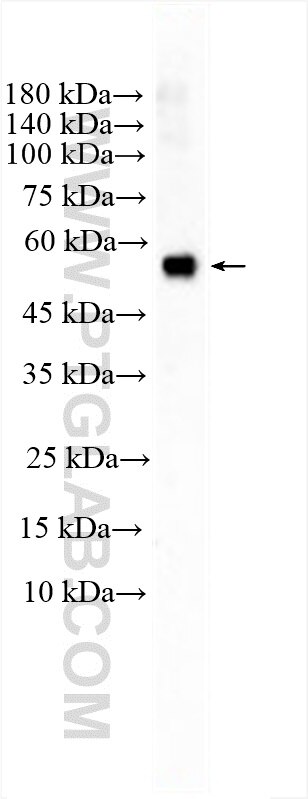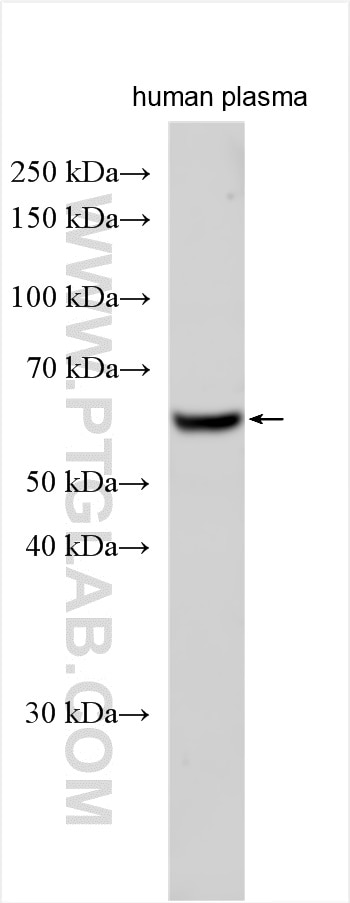Validation Data Gallery
Tested Applications
| Positive WB detected in | human plasma |
Recommended dilution
| Application | Dilution |
|---|---|
| Western Blot (WB) | WB : 1:500-1:1000 |
| It is recommended that this reagent should be titrated in each testing system to obtain optimal results. | |
| Sample-dependent, Check data in validation data gallery. | |
Published Applications
| WB | See 1 publications below |
Product Information
12051-1-AP targets APBB3 in WB, ELISA applications and shows reactivity with human samples.
| Tested Reactivity | human |
| Cited Reactivity | mouse |
| Host / Isotype | Rabbit / IgG |
| Class | Polyclonal |
| Type | Antibody |
| Immunogen | APBB3 fusion protein Ag2681 相同性解析による交差性が予測される生物種 |
| Full Name | amyloid beta (A4) precursor protein-binding, family B, member 3 |
| Calculated molecular weight | 486 aa, 53 kDa |
| Observed molecular weight | 53 kDa |
| GenBank accession number | BC013158 |
| Gene Symbol | APBB3 |
| Gene ID (NCBI) | 10307 |
| RRID | AB_3085387 |
| Conjugate | Unconjugated |
| Form | Liquid |
| Purification Method | Antigen affinity purification |
| UNIPROT ID | O95704 |
| Storage Buffer | PBS with 0.02% sodium azide and 50% glycerol , pH 7.3 |
| Storage Conditions | Store at -20°C. Stable for one year after shipment. Aliquoting is unnecessary for -20oC storage. |
Background Information
APBB3 is a member of the APBB protein family. It is found in the cytoplasm and binds to the intracellular domain of the Alzheimer's disease beta-amyloid precursor protein (APP) as well as to other APP-like proteins. It is thought that the protein encoded by this gene may modulate the internalization of APP.
Protocols
| Product Specific Protocols | |
|---|---|
| WB protocol for APBB3 antibody 12051-1-AP | Download protocol |
| Standard Protocols | |
|---|---|
| Click here to view our Standard Protocols |
Publications
| Species | Application | Title |
|---|---|---|
J Nanobiotechnology Pro-efferocytic macrophage membrane biomimetic nanoparticles for the synergistic treatment of atherosclerosis via competition effect |

